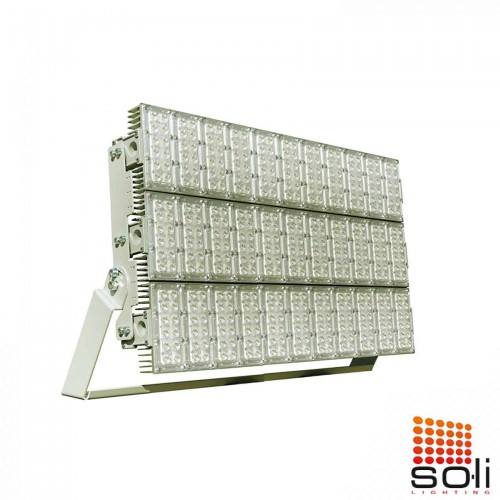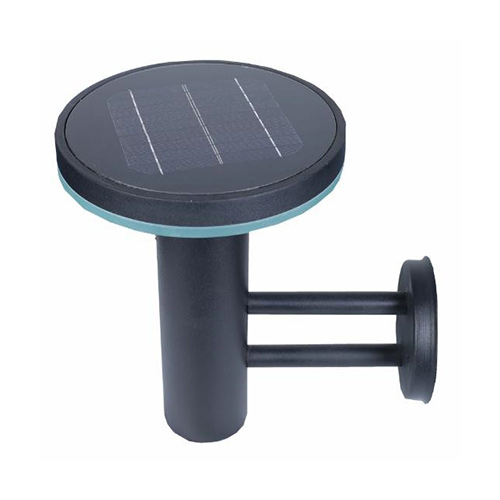5 Mistakes to Avoid When Upgrading Your Lighting to LED
Everyone knows that LED lighting is more energy efficient and lasts longer than any other lighting technology, but upgrading can cause some problems. If you're looking to upgrade your existing lighting to LED technology, there are a few common (and easily avoided) mistakes to keep in mind.
Light Distribution Is Different
The difference in light distribution can be a blessing or a curse depending on your application. LEDs are versatile due to the arrangement of the diodes, so you need to pay attention to features such as beam angle and light distribution type. If you are replacing the A-shaped incandescent bulb in a desk lamp with an LED bulb, you may lose downward light. Be sure to look for versatile A-shaped LEDs if you need them. Area lighting or wall packs offer more benefits than other fixtures when it comes to the directional nature of LEDs. Typically used in area lighting fixtures and wall packs, HID bulbs are so versatile that most of the light emitted is lost inside the fixture. Light lost due to "lumen jump" still counts in the bulb's first Lumen rating. However, due to the way LEDs are made, all of the light radiates towards where you need it most. Although the Lumen ratings of similar fixtures may look very different on paper, the LED fixture will still produce a similarly bright effect. For example, a 400 W metal halide bulb may have an initial Lumens rating of 34,000 Lumens and its LED equivalent may have a Lumens output of 9,000. Visually, the LED fixture will look especially brighter over time. After about six months the initial Lumen rating of the 400 W MH bulb in our example will drop to about 26,000 Lumens due to Lumen degradation, the LED will retain its Lumens for years. As you transition from lighting to LED technology, there are a few common (and easily avoided) mistakes to keep in mind.
Lighting Tip: When it comes to LED area lighting fixtures, pay attention to the type of light distribution. If you need a wide light circle, stay away from type I and type II distribution types.
Lights Too Bright or Too Dark
When looking for your LED upgrade, be sure to compare the Lumens of your current bulb with the new LED replacement. Comparing the wattage to the wattage equivalent of the LED is a good start, but comparing the Lumens output as well will give you a better understanding of how bright an LED bulb or fixture will be. This method works for most lights, with the notable exception of upgrading HID fixtures. As mentioned above, since LEDs are directional and HIDs are omnidirectional, this is a situation where watt-equivalent rating will help much more than Lumen rating.
Light Too Blue or Too Yellow
The color appearance of light emitted from a fixture or light bulb is measured in Kelvin. It is very important to pay attention to the Kelvin color temperature of the LED if you want to match the color light of the lighting you are upgrading. Most fluorescent tubes will have a color temperature stamp on the side of the tube along with the part number, so matching LED tube light replacements are easy. However, incandescent and halogen bulbs are not typically listed in Kelvin. This is because all incandescent bulbs are around 2400-2700K and all halogen bulbs are around 3000-3200K. Make sure to buy LED lighting in these ranges if you want to keep the same look.
Using LEDs with an Incompatible Dimmer
Not all dimmers are created equal, meaning not all dimmer switches will work with LED lights. If you've ever installed an LED bulb in a standard incandescent dimmer circuit, you may have noticed that flickering, buzzing, humming, or flashing may occur. If you plan to use dimmable LEDs, you will need a compatible LED dimmer. All of our dimmable LED bulbs have a hyperlinked "Dimmer Compatibility" PDF on the product page to ensure you get the best results from your LED lighting.
Lights Make Colors Look Dull
A light's color rendering index, or CRI, indicates how accurately it displays color compared to the midday sun. The higher the CRI rating, the more accurate the color. Some applications such as art installations, retail displays, jewelery counters and museums require a high CRI rating. Incandescent and halogen bulbs have a CRI of 100, and while LEDs can't quite match that, they can still be found in the 90's with a CRI that was considered excellent. If you replace your incandescent lamps or halogens with an LED with an average CRI rating, you may find that the colors look a bit lifeless. Although the average person may not notice enough difference that general lighting adjustments are needed.
Our ..
₺52,250
Ex Tax:₺52,250
The excite..
₺69,800
Ex Tax:₺69,800
&nbs..
₺42,250
Ex Tax:₺42,250
The excite..
₺24,350
Ex Tax:₺24,350
Our Soli L..
₺18,400
Ex Tax:₺18,400
&nbs..
₺6,450
Ex Tax:₺6,450
Our ..
₺8,700
Ex Tax:₺8,700
The excite..
₺26,600
Ex Tax:₺26,600
LED ..
₺5,250
Ex Tax:₺5,250
Road..
₺6,600
Ex Tax:₺6,600
About LED Flood Lights
- LED Flood Light Buying Guide
- Brain Of Led Flood Lights : LED Flood Light Drivers
- Can A Floodlight Be Used Instead Of Street Lights?
- Are LED Lights Suitable for Hazardous Locations?
- About High Bay and Low Bay Lighting
- 10 Benefits of LED Floodlights for Outdoor Lighting
- Main Factors of Outdoor LED Lighting Design
- Solar Floodlight
- Smart and Human Centered Lighting
- 4 Lighting Design For Post-Covid
- Health Risks That Are Actually Myth About LED Lights
- Things to Avoid When Upgrading Your Lighting Style to LED
- The Future of LED Lighting
- High Power LED Floodlight
- About Amount of Light And Light Quality
- LED Stadium Lighting Information
- Performance of LED Lights in Cold Weather
Usage Areas
- Sports Lighting
- How To Choose Stadium Lighting Company
- Aircraft Hangar Tips
- LED Warehouse Lighting
- Automotive Showroom Lighting
- Safety and Operational Tips for Light Towers
- Advantages and Applications of LED Street Lights
- How LED Street Lights Can Save Citizens Millions of Liras
- Outdoor LED Lighting
- Is LED Industry Evolving?
- LED For Car Parks
- Solar Street Lights
- Use of LEDs in Tunnel Lighting
- LED Lights for Your Garden Inside Your Home
- Solar Street Lights Calculation and Sizing


















